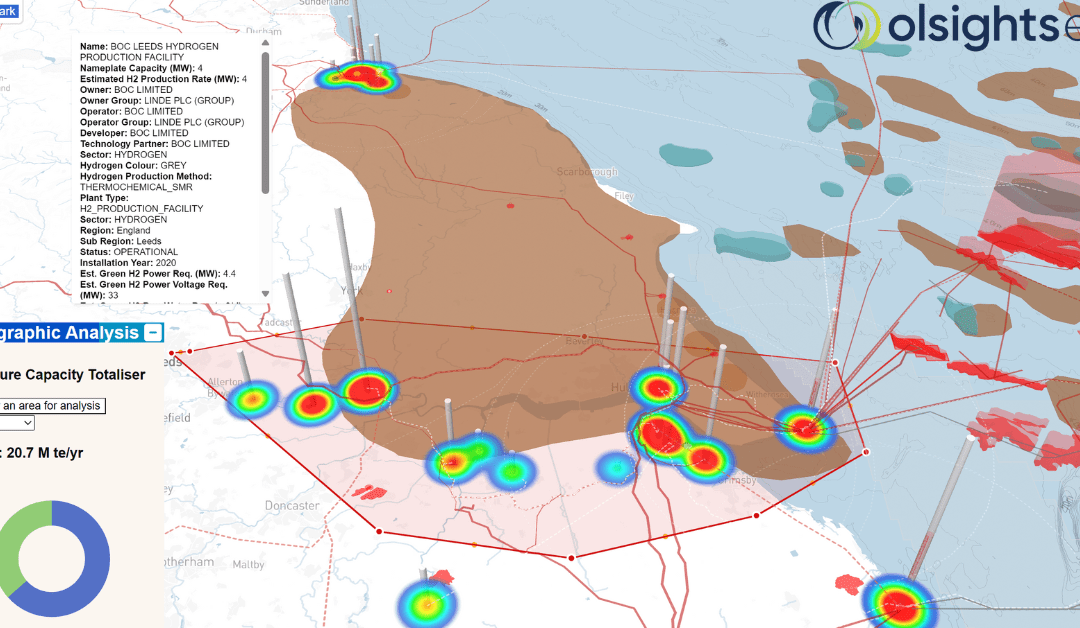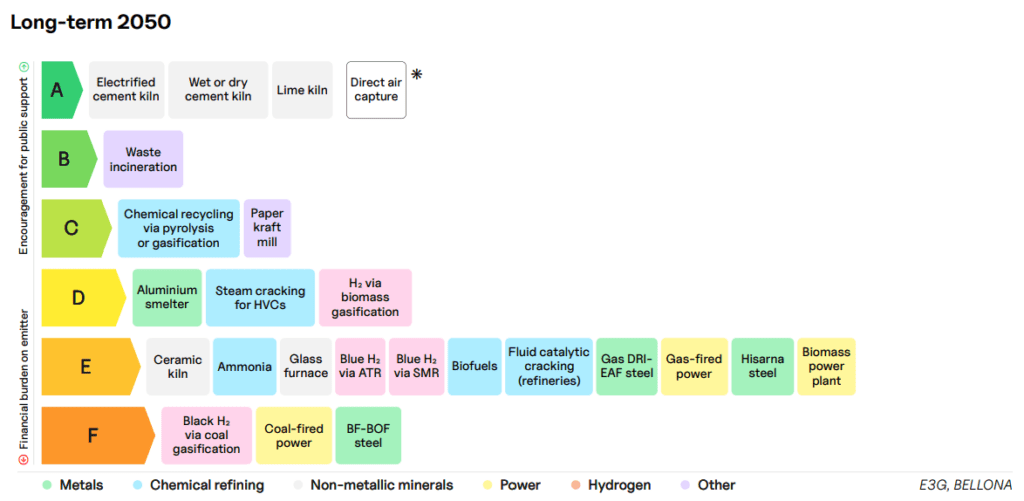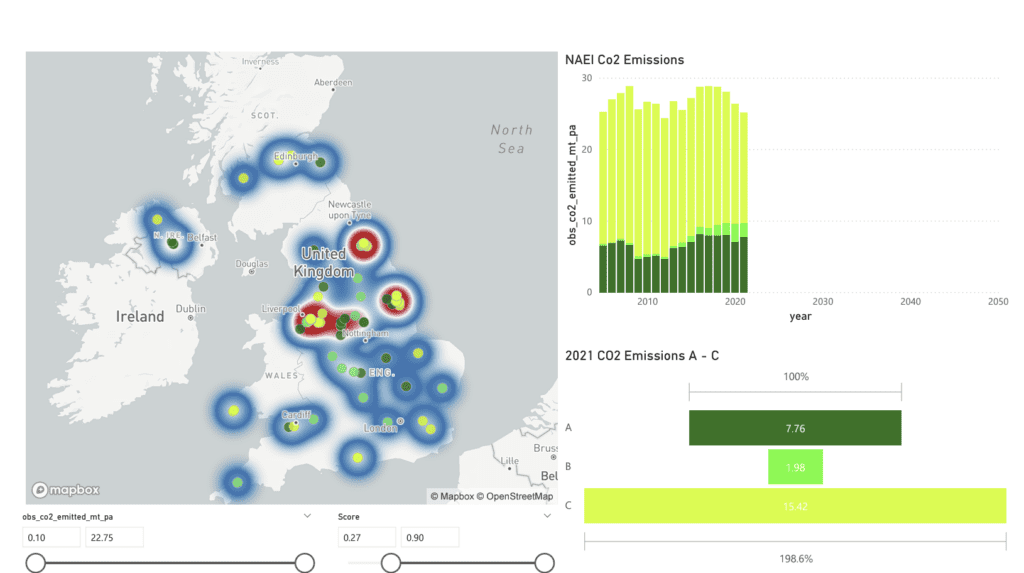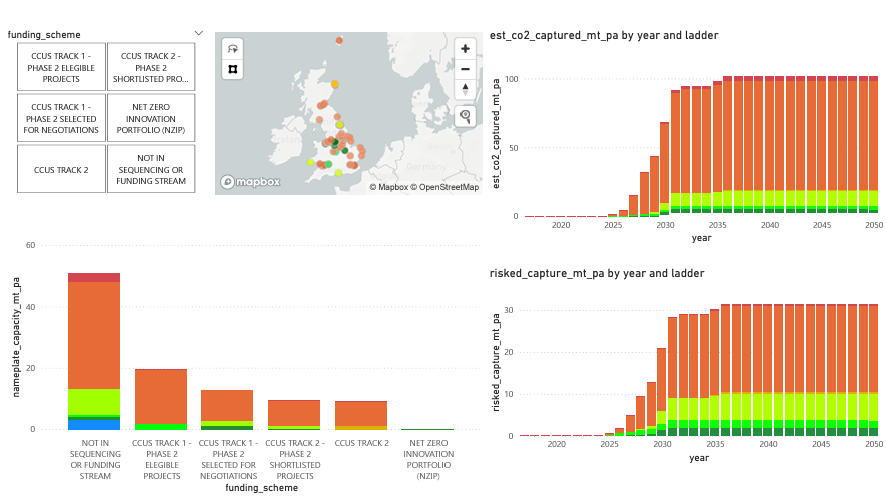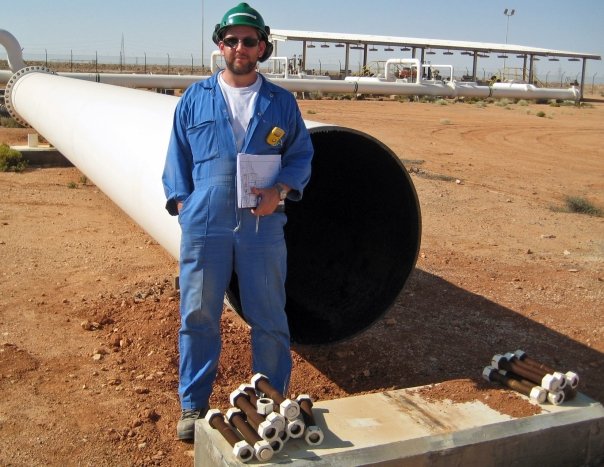As the UK strives to meet ambitious net-zero goals, the need for effective Carbon Capture and Storage (CCS) solutions becomes increasingly urgent. The “Carbon Capture and Storage Ladder,” introduced by E3G and Bellona, is a valuable framework that categorises CCS projects according to their climate impact. This ladder evaluates projects on CO2 reduction potential, feasibility, availability of alternatives, and location. In recent research by MapStand and Olsights, we explored where the UK stands on this ladder, revealing key progress areas and challenges that must be addressed to achieve the UK’s CCS targets.
The UK’s Position on the CCS Ladder
The UK has set an ambitious target to capture 50 million tonnes of CO2 per annum (mtpa) by 2035. However, our analysis shows that the current CCS project portfolio is set to deliver only 30 mtpa, highlighting the gap between current capacity and climate goals.
The CCS Ladder places projects into categories based on their climate value, and the UK’s CCS landscape shows encouraging strengths in high-viability projects. Over a third of current projects are in the A-C categories, meaning they are both feasible and effective, with access to supporting infrastructure and cost efficiencies.
Key Findings from the Olsights & MapStand Analysis
1. East and West Coast Anchor Projects:
- The UK’s CCS efforts are largely concentrated around two main clusters: the East Coast and West Coast. These regions represent the foundation of the UK’s CCS infrastructure, where proximity to high-emission industries and established infrastructure make CO2 capture and storage feasible.
- By focusing resources on these clusters, the UK has built a strong CCS foundation. These clusters align well with the high-impact targets set out by the CCS ladder.
2. Addressing Emissions Beyond Clusters:
- Although the clusters on the East and West Coasts have great potential, the UK still faces the challenge of capturing CO2 emissions from more dispersed sources across the country. Numerous industrial emissions sites lie outside these clusters, making it essential to build a broader network capable of reaching these additional locations.
- To meet the 50 mtpa target, the UK will need flexible solutions for capturing CO2 from smaller, geographically dispersed sources. This will involve developing transport infrastructure that can serve areas beyond the primary clusters.
3. Emphasising High-Viability Projects:
- Focusing on high-viability projects, as outlined in the A-C categories of the CCS Ladder, helps ensure resources are used effectively. These projects demonstrate high feasibility and align with other climate objectives, offering a practical pathway for policymakers and investors.
- Prioritising these targets strengthens the UK’s CCS portfolio, allowing for greater emissions reductions and maintaining financial and operational viability.
Next Steps to Reach the UK’s CCS Ambitions
To make progress up the CCS ladder and achieve net-zero targets, the UK must focus on several key areas:
- Expand Regional Infrastructure: Developing capture and transport solutions that can serve a more dispersed set of emissions sources will be critical. Building upon the anchor clusters, new infrastructure must reach smaller industrial sites across the country.
- Drive Innovation in Capture Technologies: Capturing CO2 from diverse sources, especially those located outside clusters, requires innovation in flexible, mobile CCS technology. This investment will ensure wider geographic coverage and improved capture rates.
Building a Blueprint for a Net-Zero Future
The insights from the MapStand and Olsights analysis offer a clear blueprint for expanding the UK’s CCS capabilities while meeting the objectives of the CCS ladder. By optimising high-viability projects, expanding regional reach, and investing in infrastructure, the UK can address current gaps and work towards the 2035 targets.
The path to net zero demands a strategic, scalable, and sustainable approach to carbon capture. Our findings will guide the UK in its journey towards a future where CO2 capture and storage is an integral, impactful element of the energy transition.
For more details or to discuss the findings, please get in touch – hello@olsights.com
—
#CarbonCapture #NetZero #ClimateTech #Olsights #MapStand #UKCCS

